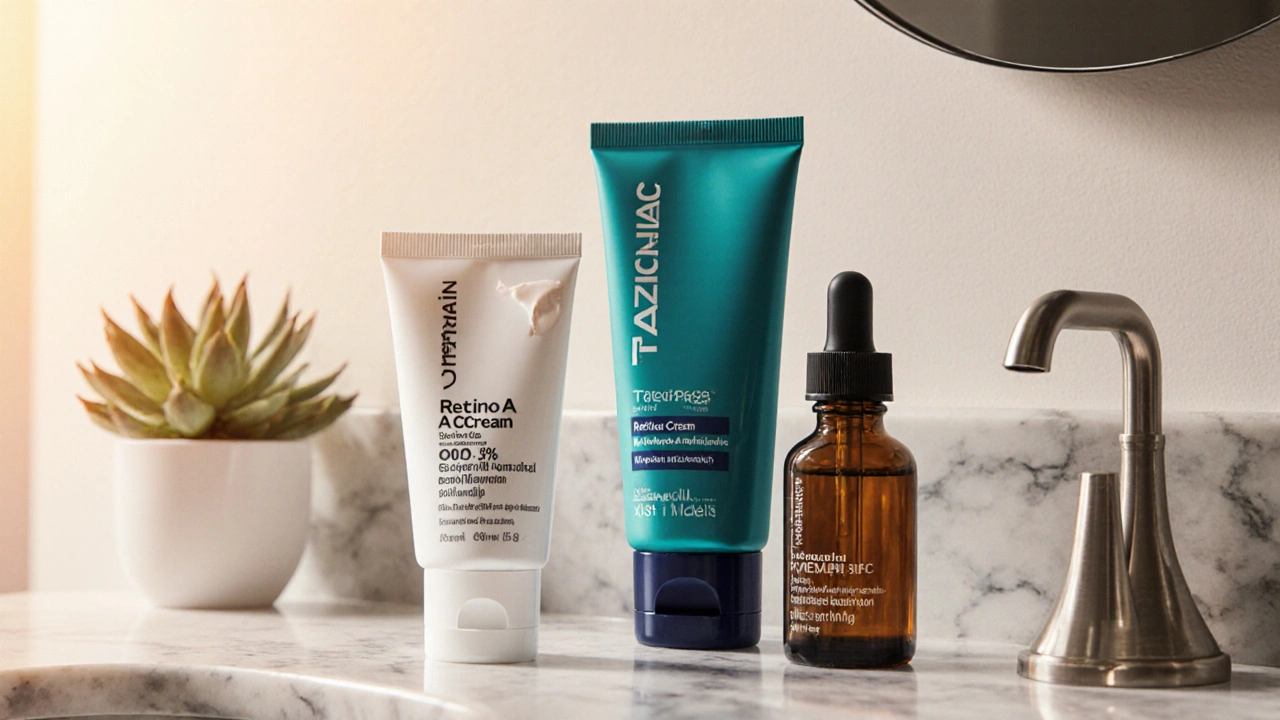Retinoid Alternatives: Real‑World Options for Clear Skin
Not everyone can or wants to use a retinoid like Accutane. Whether it’s a pregnancy concern, side‑effects, or just personal preference, there are plenty of other ways to tackle acne without reaching for a vitamin A derivative. Below we break down the most popular non‑retinoid solutions, how they work, and when they make the most sense.
Topical Swaps That Still Fight Breakouts
Benzoyl Peroxide is a classic. It kills the bacteria that love oily pores and helps unclog them. You’ll find it in strengths from 2.5% up to 10%; start low to avoid irritation. Apply once or twice a day after cleansing, and follow with a moisturizer to keep the barrier happy.
Salicylic Acid is a beta‑hydroxy acid that dissolves dead skin cells inside the pore. It’s great for blackheads and mild to moderate inflammatory lesions. Look for 0.5%‑2% gels or pads and use them daily or every other day.
Azelaic Acid tackles both bacteria and excess keratin. It also brightens post‑acne marks, making it a two‑in‑one. A 15% cream or gel applied twice daily works well for most skin types.
Dapsone Gel (5%) is a prescription option that reduces inflammation without the dryness that retinoids can cause. It’s especially helpful for hormonal acne.
Oral Choices When Topicals Aren’t Enough
Antibiotics such as doxycycline or minocycline can curb the bacteria that fuel inflamed pimples. They’re usually prescribed for a short burst (3–4 months) to avoid resistance.
Hormonal Therapy—combined oral contraceptives or spironolactone—target the oil‑producing effect of hormones. Women with cyclical breakouts often see a dramatic improvement within a few months.
Isotretinoin Alternatives include low‑dose oral isotretinoin (often called “micro‑dosing”) and newer oral retinoid‑like agents such as alitretinoin. While technically still a retinoid, the lower dose reduces the classic side‑effects, making it a middle ground for stubborn cases.
For severe cystic acne where other treatments have failed, a short course of oral corticosteroids can calm a flare, but this is a bridge, not a long‑term fix.
Lifestyle Tweaks That Amplify Results
Consistent skin care hygiene—gentle cleansing twice a day, non‑comedogenic moisturizers, and sunscreen—creates the foundation for any treatment to work. Diet matters too; cutting back on high‑glycemic foods and dairy has helped many people reduce breakouts.
Stress management isn’t a myth. Elevated cortisol can boost oil production, so regular exercise, adequate sleep, and mindfulness can actually lower acne counts.
Finally, keep an eye on product overlap. Using multiple strong actives (like benzoyl peroxide and salicylic acid together) can over‑dry the skin and cause more irritation, which often leads to more breakouts. Start one new product at a time, give it two weeks, and adjust based on how your skin reacts.
Bottom line: retinoids are powerful, but they’re not the only game in town. By mixing and matching topicals, oral meds, and simple lifestyle habits, you can find a plan that fits your skin, your health, and your comfort level. If you’re unsure which route to take, a quick chat with a dermatologist can point you toward the safest, most effective option for your unique situation.
Retino A Cream 0.05 (Tretinoin) vs Top Retinoid Alternatives: Detailed Comparison
Compare Retino A Cream 0.05% tretinoin with top alternatives like Retin‑A, Differin, Tazorac, retinol, and bakuchiol. Get a detailed table, usage tips, and FAQs to choose the right retinoid.
